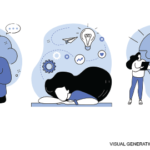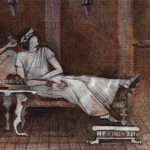Deliberate Trial & Error
Big deal, you may say. We already know that rheumatoid arthritis is a multifaceted condition. It’s self-evident, and it didn’t require any fancy Janusian thinking to get to that point. But is that so? Our rheumatologic forefathers weren’t so confident in such a conclusion. Only in retrospect can we make such certainties. Only because our predecessors worked so hard in the clinics and in the laboratories does that conclusion come to us so easily. By the same token, a few generations down the line, our descendants may not understand the great debates that we held because we are working hard, but largely invisibly, to resolve these contradictions.
Which brings us to another paradox that scaffolds scientific progress: Science, in particular the basic immunology that underpins rheumatology, is based on trial and error. Yet at the same time, we have to be deliberate in what we do to expedite the answering of longstanding and vexing questions. Clearly, there’s a compromise, that puts us on the right path. But is there a way that we can resolve this in a more efficient manner? Janusian thinking is the answer—and also, it is not.
According to Dr. Rothenberg’s article in 1971, Janusian thinking can be split into four phases: 1) motivation to create; 2) deviation from the usual; 3) simultaneous opposition or antithesis; and 4) construction of the theory. Although the specifics go well beyond this column, identifying the problem in a disciplined manner and going through the steps sequentially may lead to a theory that accommodates these contradictions simultaneously.1
Of note, we must not simply play word games with synonyms and antonyms, but go deeper into exploring concepts, aesthetes and styles.4 A genuine motivation and thirst for resolving such contradictions is necessary, but it is also vital to preserve the integrity of both sides of the debate. It’s a deeply personal process, yet it can be expedited by group discussions.
I have found it intensely frustrating to come to that elusive conclusion or—as articulated in the article—theory, but also, oddly, pleasant and satisfying. Coming up with a solution that reduces discomfort requires stewing in discomfort. It necessitates embracing ambiguity at the edges to find clarity at the core. It requires humility to recognize our fundamental limitations in understanding the world, but also hubris in the inherent belief that a better solution can be found. It’s a mind-bending process, but also one that gets me to the core of my being.


